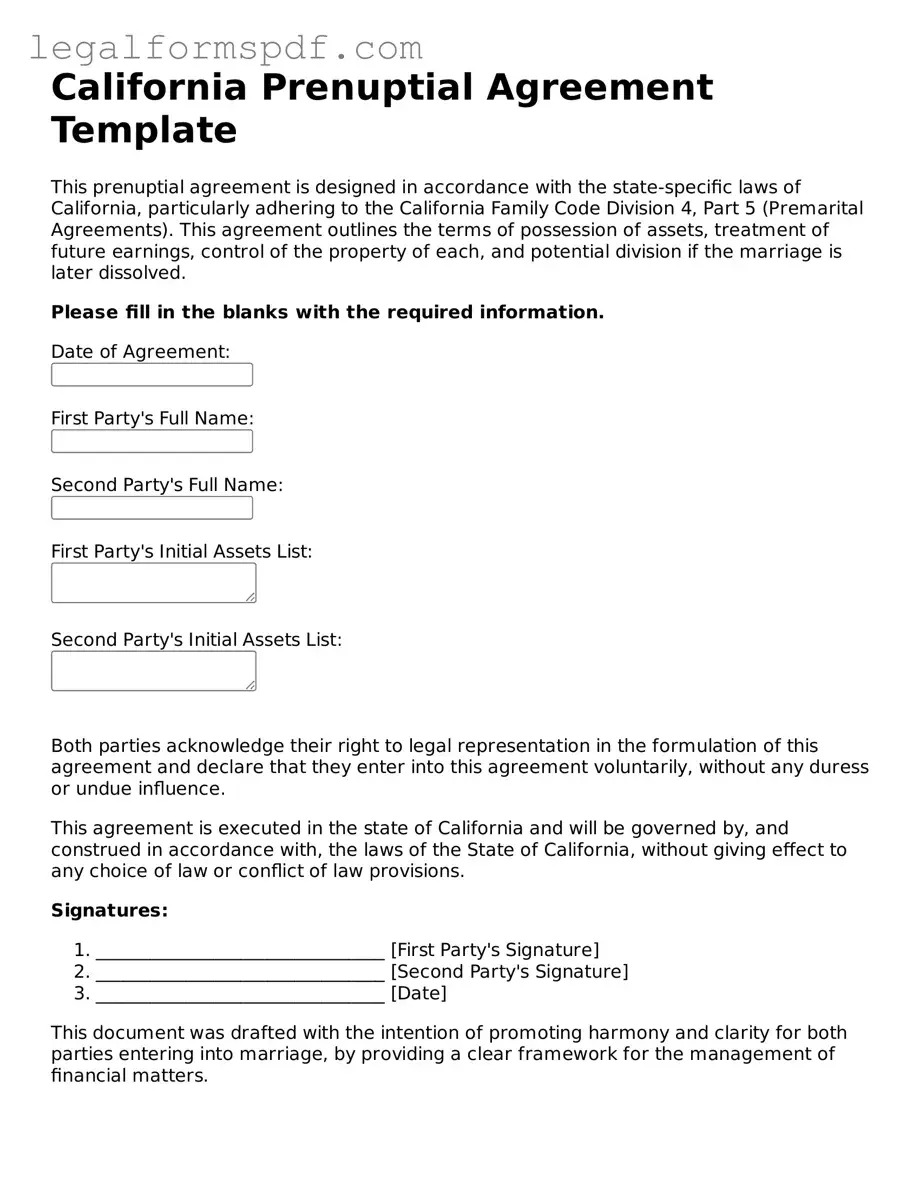What is a California Prenuptial Agreement Form?
A California Prenuptial Agreement Form is a legal document created before marriage, setting forth how assets and financial matters will be handled during the marriage and in the event of a separation, divorce, or death. It allows couples to decide their financial rights and responsibilities, rather than leaving it to state law.
Why should a couple consider signing a Prenuptial Agreement in California?
Signing a Prenuptial Agreement in California helps protect individual assets, clarify financial rights and responsibilities, avoid potential conflicts in case of separation, and ensure financial security for both parties. It’s particularly important in California, a community property state, where without an agreement, assets acquired during marriage are typically divided equally in a divorce.
Are there any requirements for a Prenuptial Agreement to be valid in California?
Yes, for a Prenuptial Agreement to be valid in California, it must be in writing, signed by both parties, and entered into voluntarily. Both parties must have had the opportunity to consult with their own independent legal counsel, or have explicitly waived the right to do so in writing. Additionally, there must be full disclosure of all assets and liabilities by both parties, and the agreement cannot promote divorce or violate public policy.
Can a Prenuptial Agreement in California cover child support or custody issues?
No, in California, a Prenuptial Agreement cannot dictate terms regarding child support or custody issues. These matters are determined based on the child's best interest at the time of the legal separation or divorce, and not by prior agreements between parents.
How can someone modify or revoke a Prenuptial Agreement in California?
In California, a Prenuptial Agreement can be modified or revoked only by a written agreement signed by both parties. The process is similar to creating the initial agreement and requires full transparency and mutual consent.
Does a couple need a lawyer to create a Prenuptial Agreement in California?
While it's not legally required, having a lawyer is highly recommended when creating a Prenuptial Agreement in California. Lawyers can ensure that the agreement complies with state laws, represents both parties' interests fairly, and is enforceable in court. Additionally, the requirement for independent legal advice or the voluntary waiver of that advice is a critical aspect of ensuring the agreement's validity.
What happens if a Prenuptial Agreement is deemed invalid in California?
If a Prenuptial Agreement is deemed invalid in California, the court may disregard the entire agreement or certain provisions. The division of assets and financial obligations would then be resolved in accordance with California's community property laws or other relevant state statutes, treating the couple as if no agreement had ever existed.
Are Prenuptial Agreements effective in preventing disputes in the event of divorce?
While not absolute, Prenuptial Agreements can significantly reduce disputes during a divorce, especially those related to asset division and financial matters. By clarifying rights and responsibilities from the start, these agreements can mitigate potential misunderstandings and disagreements. However, issues related to child support and custody will always be open to review and modification by the court.
